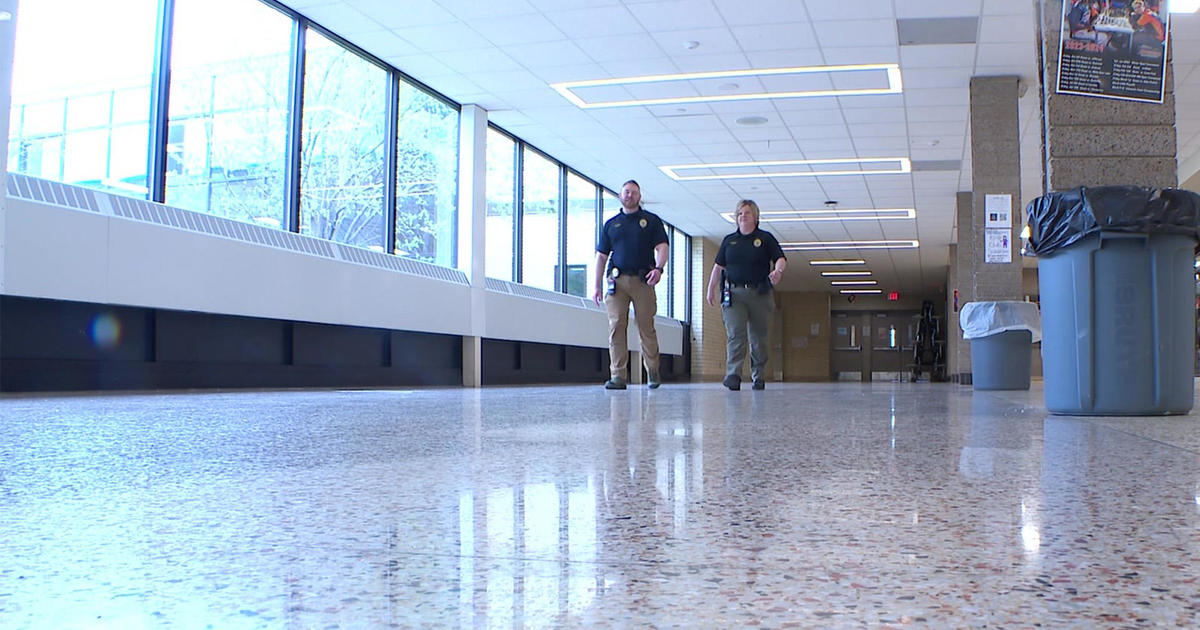2 Views Of State Economy Shade Governor Race
ST. PAUL, Minn. (AP) — As Minnesota Gov. Mark Dayton makes the case for a second term, a major theme he's pressed is that the state economy has outperformed most of the Upper Midwest on his watch.
How voters view the economy will go a long way in determining how Dayton, a Democrat, fares in November. Republicans concede things have turned around but they say the recovery has been far from robust. There's no shortage of ways to measure the economy, and each side will spend the next 10 weeks debating whether the glass is half-full or half-empty.
The market value of taxable property in the state hit an all-time high this year at $592 billion, surpassing the 2009 mark that tumbled during the recession. Minnesota's per-capita income is nearing $48,000, well above the national average of $44,500. Tens of thousands more jobs exist now than on Dayton's first day, and unemployment has fallen from 6.8 percent in 2011 to 4.5 percent today.
"We've got Minnesota unquestionably headed in the right direction," Dayton told The Associated Press in an interview this week. "There's more that needs to be done. There are still people out of work. There are still people who want better opportunities."
Republicans argue that the good-looking numbers are misleading and that many people are "underemployed." They point to research from the state's Department of Employment and Economic Development pegging 53 percent of Minnesota workers as in positions beneath their qualification level.
Dayton's GOP foe, Jeff Johnson, has seized on the statistic.
"Half of the people employed in Minnesota are employed in a job they really don't want. They are employed in a job that is part time versus full time. They are employed in a job that is paying them less than what they think they should make," Johnson, a Hennepin County commissioner, said at a recent campaign event.
Exactly how to read the DEED figure is in dispute.
Steve Hine, the state researcher who has been calculating it under both Democratic and Republican administrations, said it's designed to show the mismatch between education level and the minimum requirement for various occupations. He sees it as a tool for business, education and government leaders to see where policy work may be needed to align state employment needs and college degree programs.
Underemployment can be when a recent college graduate's sole paycheck comes from bartending or when a scientist winds up working as a clothing-store cashier, either by choice or necessity.
"This is absolutely a measure that reflects a lot more progress is needed before we can claim that our labor force is fully and properly employed," Hine said. "You can't use these numbers to say half of our workforce is unhappy in the job they have."
His analysis combining census and federal Bureau of Labor Statistics data found there were 51.6 percent — or more than 1.5 million workers — who were deemed underemployed in 2006, the first year he crunched the numbers. It peaked in 2009 with 53.7 percent and sat at 53.4 percent in 2012, the most recent figure available. According to the latest measurement, only 37 percent of workers were classified as in jobs suited to their education level and 10 percent were exceeding their qualifications.
There are caveats. Minnesota laws or licensing standards don't perfectly align with the federal occupation data. For instance, a college degree is required of Minnesota police officers but the analysis relies on a federal definition that says a high school diploma is enough. In other areas, some workers would be considered underqualified for the jobs they hold compared to peers in other states, but aren't classified as underqualified in the analysis.
A national study published this year by the Federal Reserve Bank of New York honed in on underemployment among college graduates and found the rate to be fairly consistent over the past 20 years, through good times and bad.
Johnson said in an interview he plans to keep using the Minnesota figure to suggest the economy isn't as rosy as Dayton portrays.
"The kids living in the basement with a four-year degree are not by choice," he told AP. "They would prefer not to live with their parents."
Dayton sees it as "an indication of how desperate the Republicans are to find something to complain about because they know the economy is improving and growing rapidly."
The signals on the job front are mixed. While Minnesota has added jobs overall this year, the growth rate has been slow.
University of Minnesota economics professor V.V. Chari said people seeking clarity might be better off focusing on the employment rate, which is the percentage of people employed from the working age population. By that measure, he said, the recovery is weak.
Minnesota's employment-to-population ratio is about 67 percent — a figure that hasn't budged much in recent years.
But Chari says assigning blame or credit to a governor for short-term economic patterns is misplaced because states like Minnesota "are a small minnow in the wake of a giant aircraft carrier" of the U.S. economy.
"The Republicans are right in saying the economy still looks dismal relative to reasonable expectations," Chari said. "The Democrats are also right in saying there's only a limited amount in what a governor of a relatively small state can do when faced with headwinds this strong."
(© Copyright 2014 The Associated Press. All Rights Reserved. This material may not be published, broadcast, rewritten or redistributed.)



